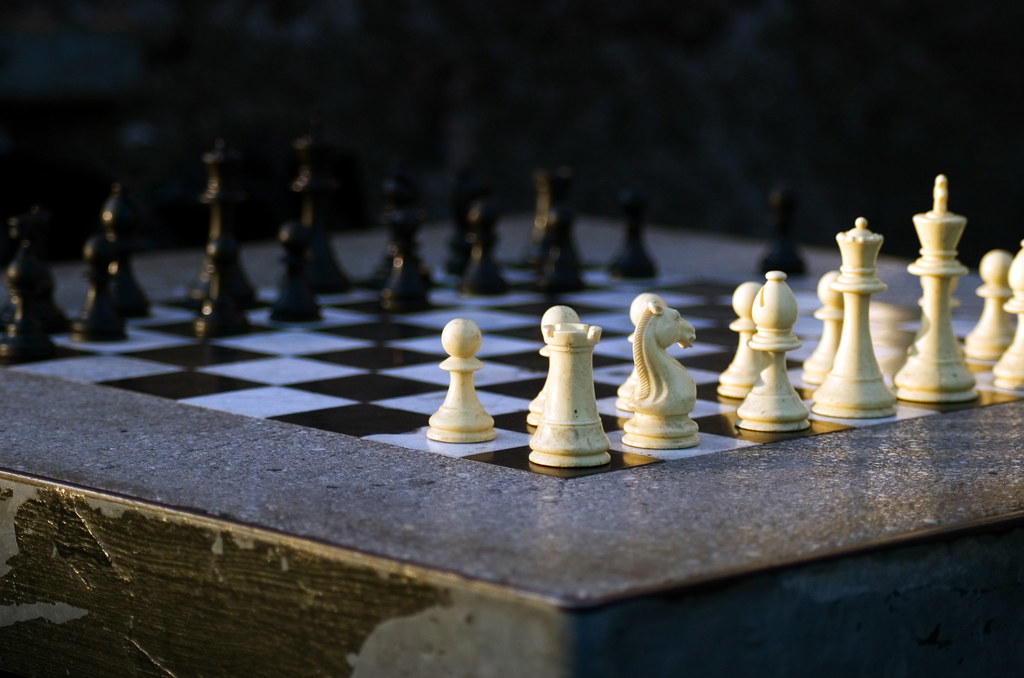Chess is an essential pre-packaged game that has been delighted in for a really long time, spellbinding the personalities of millions all over the planet. Starting in India during the Gupta Domain, chess has advanced through different societies to turn into the game we perceive today. It is played on a 8×8 lattice, called a chessboard, with 64 squares of exchanging colors, regularly high contrast. Every player orders a multitude of 16 pieces: one ruler, one sovereign, two rooks, two knights, two ministers, and eight pawns. The goal is to checkmate the adversary’s interests above all else, putting it under danger of catch that can’t be avoided.
The Chessboard and Pieces
The chessboard comprises 64 squares in a 8×8 lattice. Every player begins with 16 pieces.
King
The main piece, the game is lost assuming that the lord is checked. It moves one square in any direction.
Queen
The most remarkable piece, it can move quite a few squares along a line, segment, or diagonal…
Rooks
They move quite a few squares along lines or sections.
Bishops
They move slanting Ly for quite a few squares.
Knights
They move in a L-shape: two squares in a single bearing and afterward one square perpendicular
Pawns
They push ahead one square, however, and catch slanting Ly. On their most memorable move, they can push ahead two squares.
Fundamental Principles and Objectives
Every player alternates moving one piece. White moves first. The essential objective is to checkmate the rival’s best. Checkmate happens when the Lord is in a situation to be caught (under wraps) and there is no lawful move to get away from the danger. In the event that a lord isn’t under wraps yet no legitimate moves are accessible, the game finishes in an impasse, coming about in a draw.
Exceptional Moves
Chess includes a few exceptional moves.
Castling
a move including the Lord and a rook. The Lord moves two squares towards a rook, and the rook moves to the square over which the ruler crossed. Castling can happen assuming neither one of the pieces has moved previously, there are no pieces among them, and the ruler isn’t in check.
En Passant
an extraordinary pawn catch that can happen when a pawn pushes two squares ahead from its beginning position and grounds close to a rival’s pawn. The contradicting pawn can catch maybe it had moved one square. **Promotion**: When a pawn arrives at the contrary side of the board, it very well may be elevated to some other piece, normally a queen.
Opening, middlegame, and endgame
Chess is ordinarily partitioned into three phases.
Opening
the underlying stage where players foster their pieces and control the focal point of the board. Well known openings incorporate the Ruy-Lopez, Sicilian Protection, and Sovereign’s Gambit.
Middlegame
the stage where players execute their methodologies, including strategies like forks, sticks, and found assaults. It is pivotal to adjust assault and protection while moving for positional advantages.
Endgame
The last stage, where barely any pieces remain. Final stages require exact estimation and information on unambiguous procedures, like resistance and advancement techniques, to get victory.
Technique and Tactics
Effective chess play consolidates long haul systems and transient strategies.
Strategy
includes arranging and positional comprehension. Key standards incorporate controlling the middle, creating pieces effectively, guaranteeing ruler wellbeing, and keeping up with pawn structure.
Tactics
Momentary moves that set out quick dangers and open doors. Normal strategies incorporate forks (going after two pieces at the same time), pins (immobilizing a piece by compromising a more significant piece behind it), and sticks (going after an important piece so it moves, uncovering a lesser piece behind it)
Eminent Players and History
Since forever ago, numerous players have completely influenced chess. Wilhelm Steinitz is viewed as the principal World Chess Champion, holding the title from 1886 to 1894. Emanuel Lasker, José Rael Capablanca, and Alexander Alekhine were other early heroes. During the twentieth century, Bobby Fischer’s triumph in 1972 denoted a vital crossroads in chess history, particularly remarkable for breaking Soviet predominance. Garry Kasparov, who ruled from 1985 to 2000, is often viewed as quite possibly the best player. Today, Magnus Carlsen, the best on the planet starting around 2013, keeps on ruling the game.
Current Chess and Technology
The appearance of innovation has significantly impacted chess. PC motors like Stockfish and Alpha Zero have altered game investigation and readiness. Online stages, for example, Chess.com and Laches permit players to contend around the world, access learning assets, and break down games.
Conclusion
Chess stays an immortal round of profound procedure and expertise. Its mix of intricate principles and the potential for inventive articulation keeps on enrapturing players, everything being equal. Whether played nonchalantly or at the most elevated levels of rivalry, chess is a game that challenges the keenness and perseveres as a demonstration of the force of human idea and creativity.
